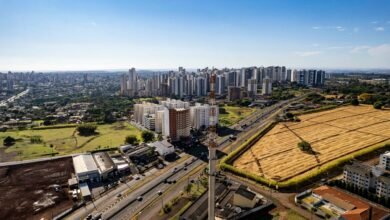The frequent call drops associated with the number 7456387596 in high-density urban environments highlight critical issues. Network congestion and signal interference are primary contributors. As user demand escalates, the existing infrastructure often falters. This raises questions about effective solutions. Exploring innovative technologies could be key to addressing these challenges, yet many remain unaware of the potential improvements that lie ahead. The implications for users and service providers are significant.
Common Causes of Call Drops in Urban Areas
Call drops in urban areas are often attributed to a confluence of technical and environmental factors that undermine communication stability.
Signal interference from buildings and electronic devices can disrupt transmission pathways. Additionally, device compatibility issues arise when older models struggle to engage with advanced network technologies, leading to dropped calls.
Together, these elements contribute to a frustrating communication experience in densely populated locales.
Impact of Network Congestion on Communication
How does network congestion affect communication reliability in urban settings?
Network congestion significantly diminishes network performance, leading to increased call drops and delayed message delivery.
As the number of simultaneous users exceeds infrastructure capacity, user experience deteriorates, resulting in frustration and communication breakdowns.
This instability undermines trust in mobile networks, emphasizing the need for efficient resource allocation in high-density areas to enhance connectivity.
Technological Solutions to Reduce Call Drops
Innovative technological solutions are essential for mitigating call drops in high-density urban environments.
Network optimization techniques, such as load balancing and dynamic resource allocation, enhance overall capacity.
Additionally, signal enhancement methods, including beamforming and small cell deployment, improve coverage and reduce interference.
These advancements empower users to maintain uninterrupted communication, fostering a more reliable mobile experience in densely populated areas.
Best Practices for Maintaining Call Quality
Maintaining call quality in high-density areas requires adherence to best practices that complement technological innovations.
Effective call routing strategies ensure optimal connectivity, while signal optimization techniques enhance clarity and reduce interference.
Regular network assessments and updates are essential to identify bottlenecks.
Additionally, utilizing advanced algorithms can dynamically adjust resources, promoting uninterrupted service and empowering users to maintain robust communication regardless of location or network congestion.
Conclusion
In conclusion, the persistent call drops experienced on the number 7456387596 in high-density urban environments highlight the critical need for improved network infrastructure. With increasing demand for connectivity, can we afford to overlook the importance of technological advancements such as small cell deployment and dynamic resource allocation? By addressing these challenges, telecommunications providers can significantly enhance user experience and ensure reliable communication, ultimately fostering a more connected society amidst growing urbanization.






